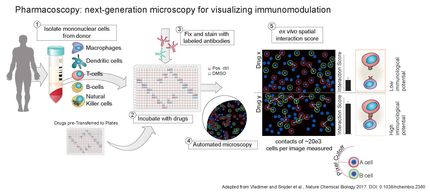Highly charged molecules behave paradoxically
A number of chemistry researchers from several institutions including Lund University in Sweden, have managed to identify a new mechanism that makes certain charged biomolecules attach to each other. The biomolecules in the present study serve as models for antibacterial peptides, that is, protein-like molecules that fulfil important functions in the body.
"Antibacterial peptides are important for our immune system. If we can figure out how they work, it may be of value in the development of new drugs", says Mikael Lund, chemistry researcher at Lund University.
The present study combines theoretical computer models with experiments. The researchers were very surprised when the data indicated that the small biomolecules were drawn to each other even though they had the same electrical charge. Nevertheless, the results were later confirmed by experiments.
"We were very surprised. These biomolecules have a high electrical charge, and the expectation was therefore that this would make them push each other away", says Mikael Lund.
Instead, the biomolecules in this study demonstrated apparently paradoxical behaviour. And the explanation for this lies at the atomic level. More specifically, it is about how certain atoms bind together at the ends of the molecular chain. The researchers' study can be described as atomic level detective work, which involves mapping the exact structure of all the atoms of the molecule.
The knowledge of how these biomolecules assemble themselves, and how their electrical charge works, is valuable in drug development contexts. The type of biomolecule concerned in this study is considered to be a promising candidate for transporting drugs into the cells of a patient, as the biomolecule has the ability to penetrate the cell casing. However, it is not yet entirely known how the biomolecule gets into the cells.
Original publication
Most read news

Get the analytics and lab tech industry in your inbox
By submitting this form you agree that LUMITOS AG will send you the newsletter(s) selected above by email. Your data will not be passed on to third parties. Your data will be stored and processed in accordance with our data protection regulations. LUMITOS may contact you by email for the purpose of advertising or market and opinion surveys. You can revoke your consent at any time without giving reasons to LUMITOS AG, Ernst-Augustin-Str. 2, 12489 Berlin, Germany or by e-mail at revoke@lumitos.com with effect for the future. In addition, each email contains a link to unsubscribe from the corresponding newsletter.


























































